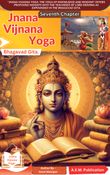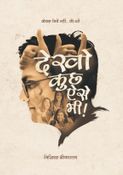Description
This Volume no. 5 continues with the English narration of the Story of Lord Ram as described in the devotional classic known as ‘Ram Charit Manas’ written by Goswami Tulsidas, from where we had left it in volume no. 4, i.e. Doha no. 163 of Canto 2, Ayodhya Kand.
The entire Book ‘Ram Charit Manas’ is divided into 7 Cantos, named Baal Kand, Ayodhya Kand, Aranya Kand, Kishkindha Kand, Sundar Kand, Lanka Kand, and Uttar Kand.
The topics that are covered in this volume no. 5 are the following:
(1) After Bharat performed the last rites of his father, a royal conference was held where the seniors tried to persuade him to accept the crown of the kingdom of Ayodhya in the absence of Lord Ram, but he refused, saying that he wants to go to the forest and ask for forgiveness from the Lord, besides requesting him to come back home.
(2) After making proper preparations, Bharat departed for the forest to meet Lord Ram; he was accompanied by a huge precession of seniors and ordinary folks of Ayodhya. On the way, Bharat befriended Nishad, the head of the boatman community, who then joined the procession and acted as a guide to lead the party and show the way onwards, in the direction Lord Ram, Sita and Laxman had gone to the forest.
(3) Bharat arrives at sage Bharadwaj’s hermitage. The sage lavishly praised Bharat and entertained the entire entourage. Then Bharat moved on in the direction of Chitrakoot where Lord Ram lived at that time. Bharat received a warm and emotional response from the country folk all along the way to Lord Ram’s hermitage.
(4) The fear of the gods and their guru’s reassurance to them. Finally, Bharat reached Chitrakoot, and all the four brothers met each other most affectionately. Lord Ram meets and welcomes everyone accompanying Bharat very warmly, and escorted them all inside his hermitage.
(5) The first conference was held at Chitrakoot where Bharat pleads his case before Lord Ram. Meanwhile, king Janak too arrived there with his entourage
(6) The second conference was held at Chitrakoot. Lord Ram persuades Bharat to honour their father’s words and bear with the Lord till the end of the designated time the Lord is obliged to stay in the forest; Bharat accepts Lord Ram’s commands, but asks the Lord to tell him where to place the consecrated waters of different holy places he had brought along in order to anoint Lord Ram as a King in the forest itself; Lord Ram told him to follow the instructions of sage Atri in this regard.
(8) Sage Atri advises Bharat to place all holy waters in a well nearby; Bharat goes on a tour of the holy sites of Chitrakoot; the third conference at Chitrakoot; Bharat accepts Lord Ram’s instructions to return home; he accepts the Lord’s wooden footwear as a token of his personal presence at Ayodhya, and prepares to return home.
(9) Bharat and his entourage leave Chitrakoot with a very heavy heart to return home to Ayodhya. The distraught party arrives in the gloomy city. Bharat puts Lord Ram’s sandals on the throne as a token of the Lord’s personal presence, and himself retires to lead a hermit’s life at a nearby suburb; Bharat’s exemplary life of renunciation and detachment praised lavishly by one and all.
Our Book contains the Original Text of Ram Charit Manas followed by Roman Transliteration of the verses, and then a comprehensive and analytical narrative of the Text in English, explaining it thoroughly and from different perspectives verse-by-verse, aided by detailed notes and references.
The other volumes that follow in this series will carry on with the magnificent narrative of Ram Charit Manas in a step-wise manner.
Ajai Kumar Chhawchharia left home when he was approximately 29 years of age due to an inner call of his heart that told him to devote his life in the service of his beloved Lord God, Sri Ram. Worldly attractions did not enchant him at all. So, he didn’t marry, and after his father’s death he came and settled permanently in Ayodhya, the holy town in India associated with Lord Ram.
Presently he works as an honorary manager of a world famous Kanak Bhavan Temple at Ayodhya, and spends his time writing in English so that the world can access the wonderful nectar of metaphysical, spiritual and devotional philosophy that is contained in Indian scriptures for which they are so renowned.
His English Books published separately by a reputed publisher of India, the details of whom can be had by contacting the author on his email given below, include: (i) The series on ‘108 Upanishads’ in five volumes having eighteen parts, (ii) Veda Vyas’ ‘Adhyatma Ramayan’ in two parts, (iii) ‘Devi Puran Ramayan’, (iv) Valmiki’s ‘Adbhut Ramayan’, and (v) ‘Biography of Lord Ram’ based on Tulsidas’ books.
Genre of Writing: Spiritualism, Philosophy, Metaphysics, Religious, Devotional and Theological.
The author’s Books are available for order online both in ‘e-book’ format and ‘paper-back book’ format at following websites—
(a) www.amazon.com (in their ‘kindle’ + ‘paper-back book’ versions),
(b) www.pothi.com (in ‘paper-back book’ + ‘e-book’ versions),
(c) www.draft2digital.com (in ‘e-book’ version).
(A) List of Books that are currently available as mentioned above :-
(A-1) (1) The Chariot of God: Dharma Rath; (2) OM and Naad; (3) YOGA—Its Practice and Philosophy according to the Upanishads; (4) Ram Geeta; (5) The Revelation of Creation—as envisioned in the Upanishads; (6) The Pentagon of Creation: As Expounded in the Upanishads; (7) The Triumvirate of Creation; (8) Maya: The Whirlpool of Delusions in Creation; (9) Surdas-Ram Charitawali; (10-a) The legend of Lord Shiva: Book 1 ‘Lord Shiva’s marriage with Parvati’; (10-b) Book 2 ‘Lord Shiva’s Sacred Hymns’; (10-c) Book 3 ‘Shiva’s different names & their significance, Shiva Puran, Upanishads’; (11) the Mahavakyas of the Upanishads; (13) Lord Ram’s marriage with Sita (based on Tulsidas’ books “Ram Charit Manas”, “Janki Mangal”, “Ram Lala Nahachu” & “Geetawali”, and sage Veda Vyas’ book “Adhyatma Ramayan”; (14) “Anthology of Sacred Hymns, Stotras & Mantras of Lord Ram”; (15) “Vairagya Shatkam” of king-sage Bhartrihari; (16) An Anthology of the Sanyas Upanishads-Parts 1 and 2; (17) “Kaag-Bhusund Ramayan” or the “Aadi Ramayan” based on Tulsidas’ Ram Charit Manas; (18) The Legendary Glory of Hanuman; (19) “Narad Bhakti Sutra”—Aphorisms for Devotion for God and the Principles of Love for the Lord; (20) “Shandilya Bhakti Sutra”—Aphorisms for Devotion for God and the Principles of Love for the Lord according to the illustrious sage Shandilya; (21) “Bhakti Sutra Mala”—A Garland of Spiritual Wisdom in the form of an Anthology of Aphorisms pertaining to Bhakti or devotion, love and affection for Lord God; (22) Glory of Lord Ram’s Holy Name, Sacred Mantras, Stotras & Hymns; (23) Saints and Non-Saints: Their Distinguishing Characters and Qualities; (24) A True Guru (Qualities, Importance and Need of a True Teacher, Preceptor, Guide and Advisor); (25) “Sundar Kand” of Ram Charit Manas; (26) The Story of Ravana and the Epic War of Lanka—Told in Slow Motion (based on, and will have the full relevant Text of, Ram Charit Manas, Adhyatma Ramayan, Anand Ramayan, Geetawali Ramayan, and Kavitawali Ramayan); (27) The Great Ancient Sages, Seers, Saints and Enlightened Kings of India; (28) The Metaphor of the Hansa in the Upanishads: The symbolism of a Grand Swan used to explain the wisdom of spiritual and metaphysical principles by the Upanishads.
(A-2) Goswami Tulsidas Series: (1) ‘Dohawali’; (2) ‘Parvati Mangal’; (3) ‘Kavitawali’; (4) ‘Janki Mangal’; (5) ‘Ram Lala Nahachu’; (6) ‘Geetawali Ramayan’; (7) ‘Vairagya Sandipani’; (8) ‘Vinai Patrika’; (9) ‘Barvai Ramayan’.
(A-3) A full-blown English rendering of Tulsidas’ epic ‘Ram Charit Manas’, otherwise also known as the “Ramayana” according to Goswami Tulsidas. My English version of this Book is comprehensive and an elaborate one, as it runs into many thousands of pages that endeavour to explain each single verse of the Book ‘Ram Charit Manas’ in fine detail from different perspectives, with the aid of explanatory notes and references.
(A-4) Detailed English renderings, with explanatory notes and commentaries of the 108 Upanishads classified according to the Vedic tradition = 6 volumes; 18 parts. [Vol. 1=Rig Veda Upanishads; Vol. 2= Sam Veda Upanishads; Vol. 3= Shukla Yajur Veda Upanishads; Vol. 4= Krishna Yajur Veda Upanishads; Vol. 5= Atharva Veda Upanishads; Vol. 6= Vedanta Concepts explained with specific references to the relevant Upanishads.
(A-5) (i) English rendering of Adbhut Ramayan by sage Valmiki.
(ii) English rendering of Adhyatma Ramayan by sage Veda Vyas.
(iii) English rendering of Devi Puran’s Ramayan by sage Veda Vyas.
(iv) A Divine Biography of Lord Ram & Glory of Lord’s Holy Name.
Books listed under A-1, A-2 and A-3 are available at www.amazon.com ; www.pothi.com ; and www.draft2digital.com
(C) Further, Books listed under A-4 and A-5 are available in Printed Book format from a ruputed Indian Publisher as follows:
Name and contact of Publisher of above Printed Books listed under (B-2):
Chaukhamba Publishing House, Delhi. [Sri Neeraj Gupta.]
Postal Address: 4697/2, Street no. 21-A, (HDFC Bank wali Gali),
Ansari Road, Darayaganj, Delhi—110002.
Phone: Mobile (Neeraj Gupta)—+919811133683
Office: 011-23286537; 011-32996391
Email: chaukhambapublishinghouse@gmail.com
chaukhamba_neerj@yahoo.com
(D) The following Books of Goswami Tulsidas listed under A-2—viz. Vinay Patrika, Geetawali Ramayan, Kavitawali Ramayan, Dohawali, Parvati Mangal, Janki Mangal, Vairagya Sandipani, Barvai Ramayan, Ram Lala Nahachu, along with certain other Books (e.g. Upanishads Dedicated to Lord Ram, Shandilya Bhakti Sutra, Narad Bhakti Sutra etc.) are being published by the following Indian Publisher:
Pratibha Prakashan, prop. Sri Radheyshyam Shukla, Delhi.
Address: 7259/23, Ajindra Market, Prem Nagar, Shakti Nagar, Delhi 110007
Mobile: +91-93508 84227;
Landline phone: +91-114708 4852.
Email: pratibhabooks1@gmail.com
Contact details of Ajai Kumar Chhawchharia—
Postal address:-36-A, Rajghat Colony, Parikrama Marg, P.O.—Ayodhya, Pin—224123, Distt. Ayodhya (Faizabad), U.P. India.
Phone:—(India) +919451290400; +919935613060.
Website: < www.tulsidas-ram-books.weebly.com >
Email of Author: (i) < ajaichhawchharia@gmail.com >
(ii) < ajaikumarbooks@gmail.com >
Archive.org: < https://archive.org/details/@ajai_kumar_chhawchharia >
Facebook ID < www.facebook.com/ajaikumarchhawchharia8 >
Linkedin: < www.linkedin.com/AjaiKumarChhawchharia >
Goodreads: https://www.goodreads.com/author/show/991710.Ajai_Kumar_Chhawchharia





